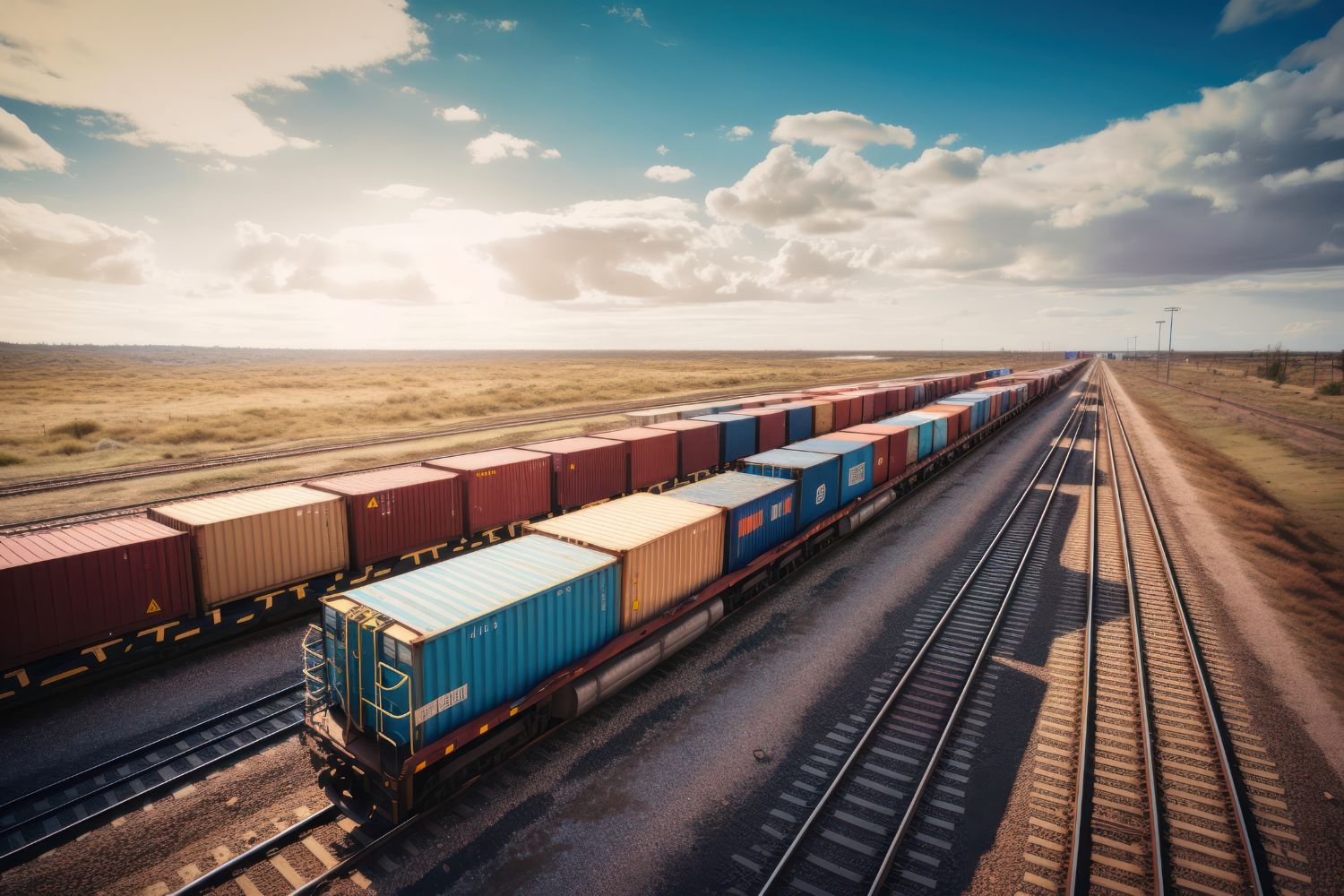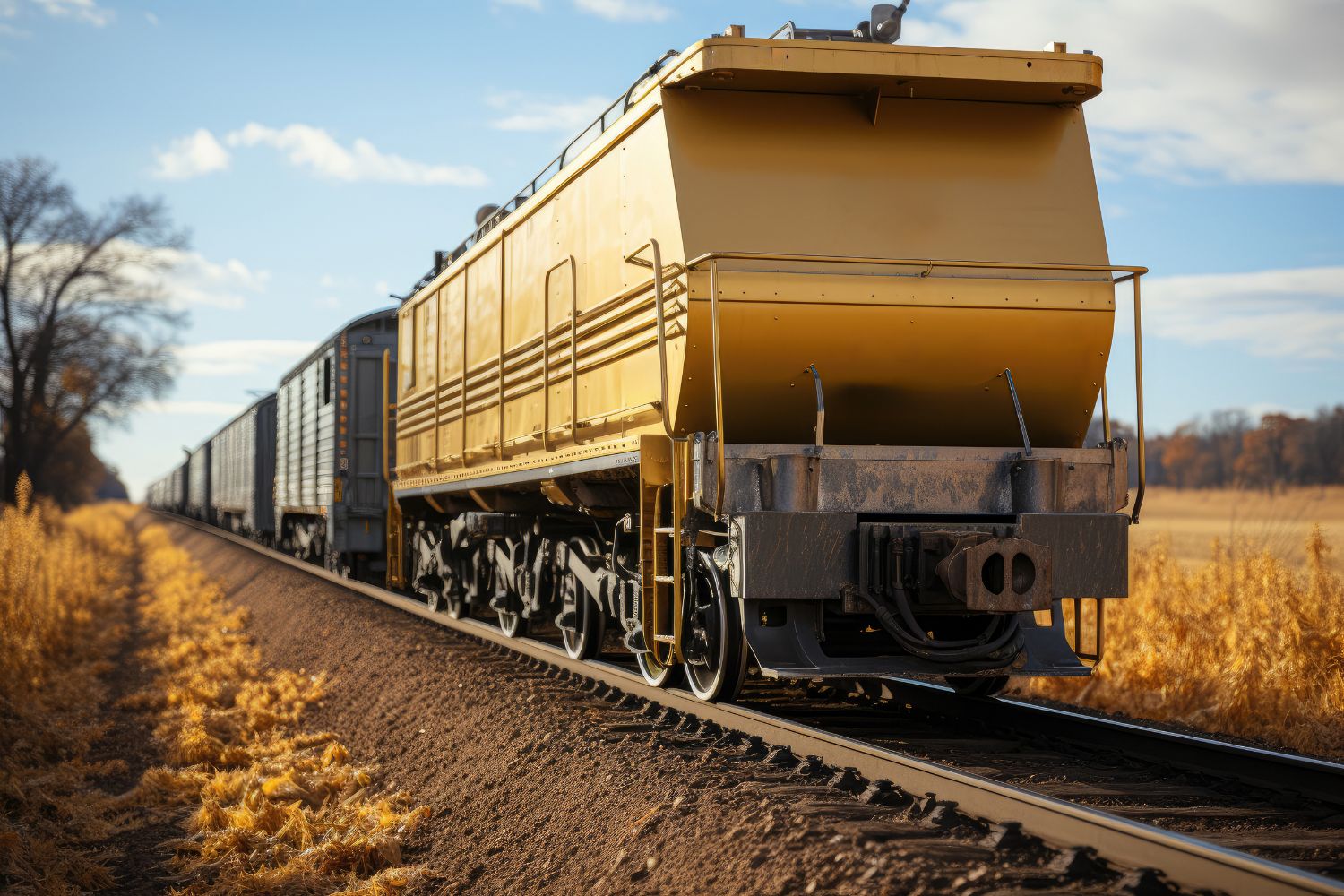Understanding Rail Freight Transport: Train Types, Loads, and Shipping Options
Did you know there are different types of rail freight transport? Whether you’re shipping heavy equipment or bulk goods, it’s crucial to pick the rail freight mode to protect your commodities. Not all freight train types are equipped to handle specialized shipping, like frozen foods, which can ruin your products and professional reputation.
Below is a quick overview of railway transport to ensure you ship your freight safely and securely.
What is Rail Freight Transport?
Railroad transportation ships freight via trains for commercial use. Passengers don’t ride on these trains as public transportation. Businesses often use train transport because it can carry heavy freight over long distances and is more cost-effective than airway shipping. It also faces fewer congestion issues than road transport.
Rail transport can carry up to 400 trucks in weight and is also a fuel-efficient option over truck shipping for bulk goods. According to the Association of American Railroads (ARA), rail shipping is the best freight transportation mode because it accounts for only 0.5% of total U.S. greenhouse gas emissions.
However, OTR transport offers unique benefits over trains, like more temperature control flexibility.
If you’re shipping heavy equipment and considering railway transport, you must understand your options first to prevent spoiling your commodities.
The Different Modes of Rail Freight Transport: Your Shipping Options

Customers often confuse cargo and freight trains with each other. Cargo trains transport goods overseas from warehouses or distribution centers to ports and airports—also known as port-to-door transport. Freight trains ship between logistics centers and rail transportation networks.
The different modes of train freight transport are:
Door-to-Door
Door-to-door transport is the most common method of rail freight shipping. A courtier picks up your commodities directly from the seller and delivers them to the customer’s home. If your customer is shipping by train, it can be from international or economy standard shipping.
This transport mode is best for time-sensitive deliveries because door-to-door shipping can’t be stored for long at warehouses or ports. Logistics companies also cut out the middleman and are responsible for custom and freight-related tasks to expedite rail shipments.
Bulk goods, like perishable food and e-commerce brands, can benefit from this freight shipping option due to its timely deliveries.
Coast-to-Coast
Coast-to-coast rail transport ships your freight between major U.S. ports. If you’re shipping freight across the country, this transportation mode is ideal as it doesn’t stop locally. Delivery times will vary based on the distance and port congestion.
Intermodal
Intermodal railway involves different transportation modes in one shipment. If you plan on shipping by rail and want to save on costs, this option is ideal as it uses intermodal containers to easily transfer commodities between various transport modes.
You can ship goods by train, then once they reach closer to your destination, they can be transferred to trucking transport for local deliveries. This transportation service is best if you want to lower consumer costs, benefit from free trade, and reduce your carbon footprint.
Types of Freight Trains Used for Shipping

So, what is a freight train? And what do freight trains carry exactly? There are multiple answers to these common questions, as there are different freight train types with various capabilities. A freight train is a mode of commercial transport to ship goods from one place to another. It’s also known as a container train or car.
The types of freight trains are:
Containers
Also known as box cars, these come in standard and double-stack container trains for additional storage room. It’s the most common rail transport mode and is best for shipping structured non-perishable items, like machinery and packaged non-perishables.
Refrigerated Containers
A refrigerated container is a type of freight train with temperature control. It’s designed for shipping goods that need consistently cold climates, like pharmaceuticals, flowers, and food.
Hopper Cars
A hopper car is similar to a container train for non-perishable freight shipments, except it can transport loose items. Non-structured commodities, like sugar, coal, and wheat, can benefit from this mode because it can easily dump them from the sides or below for seamless deliveries.
Hoppers come covered or with an open top, so they’re less affected by outdoor elements. Construction sites or farms benefit greatly from this rail shipping option.
Gondolas
Gondolas are similar to hopper cars, except they don’t open from the sides or bottom for deliveries. They also ship loose commodities like gravel and sand but are manually unloaded. These freight trains come closed or open-top and can carry a heavy amount of freight at once.
Coil Cars
Coil cars have a rounded metal top designed for cylindrical commodities, like copper coils and plastic tubing. They’re a type of gondola that can have an open top or covered metal hood.
Flatcars
Flatcars are straightforward. They’re flat freight trains, typically made of steel or wood for shipping very long freight or uniquely shaped commodities. Since flatcars are always open, it’s not meant for fragile or perishable goods.
Construction sites can benefit from flatcars with easy lumber, steel beams, and machinery equipment shipments. Flatcars are also commonly used for intermodal freight transport.
Centerbeams
Centerbeam freight trains transport bundled commodities, like packaged wood and construction materials. However, it requires filling the car to capacity to balance the freight evenly via forklift.
Autoracks
An autorack is a type of freight train transport designed for shipping vehicles. It can transport cars, vans, and even light trucks. If you’re an automaker or dealership, this is your best option.
Shipping by Train? Let Lone Star Logistics Transport Your Valuable Freight Safely
At Lone Star Logistics, we provide different types of rail freight services to accommodate your unique commodities, including custom routes. Whether you’re shipping bulk goods or heavy equipment, we have the technology to track and trace rail freight with route updates so you know where your products are.
Fill out our Shipper Request Form to get a free quote today!
Have questions on freight shipping options?
Contact our 24/7 bilingual support team at (833) 562-3722 or info@lone-starlogistics.com so we can recommend the best solution for your goods.

